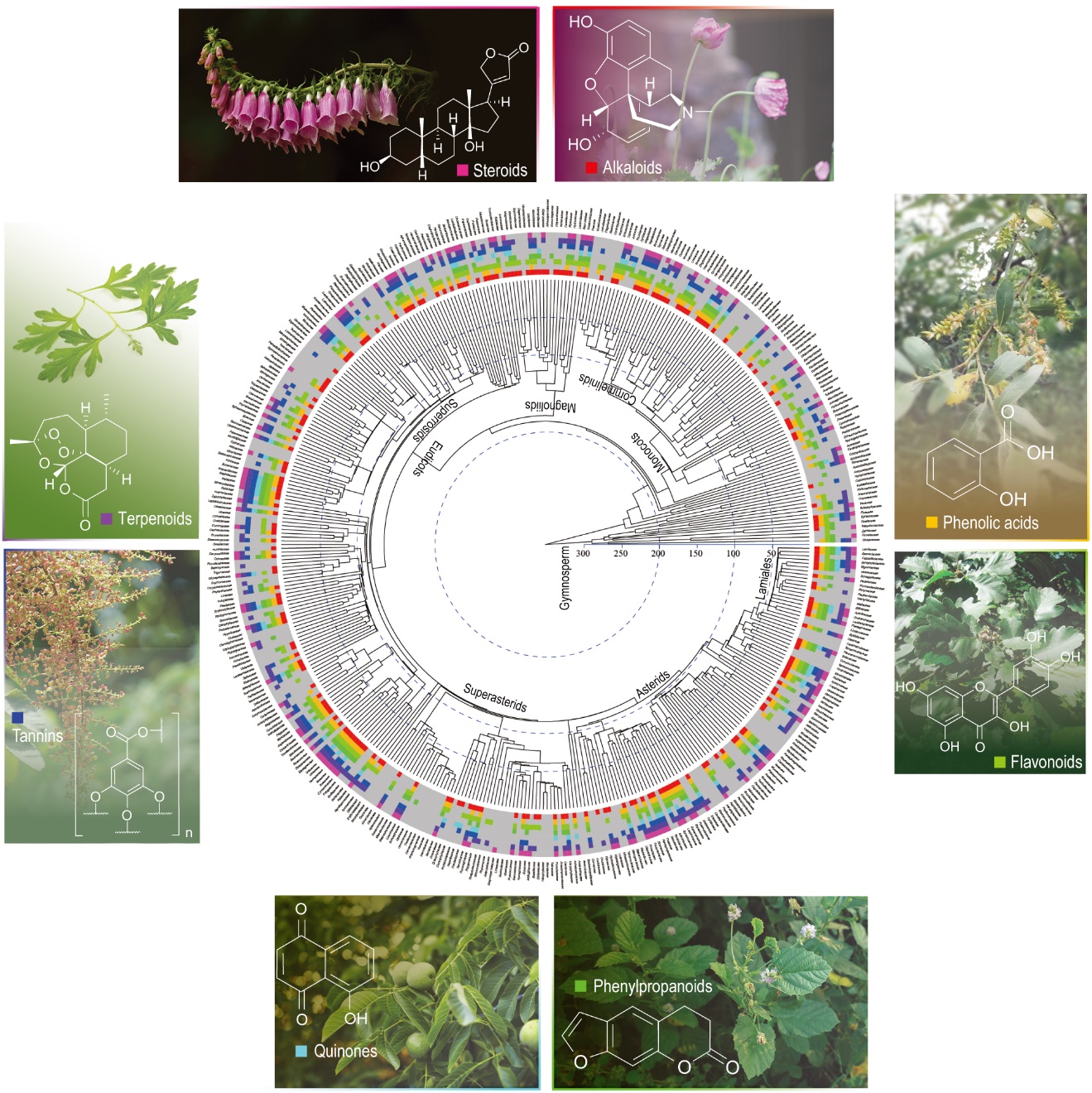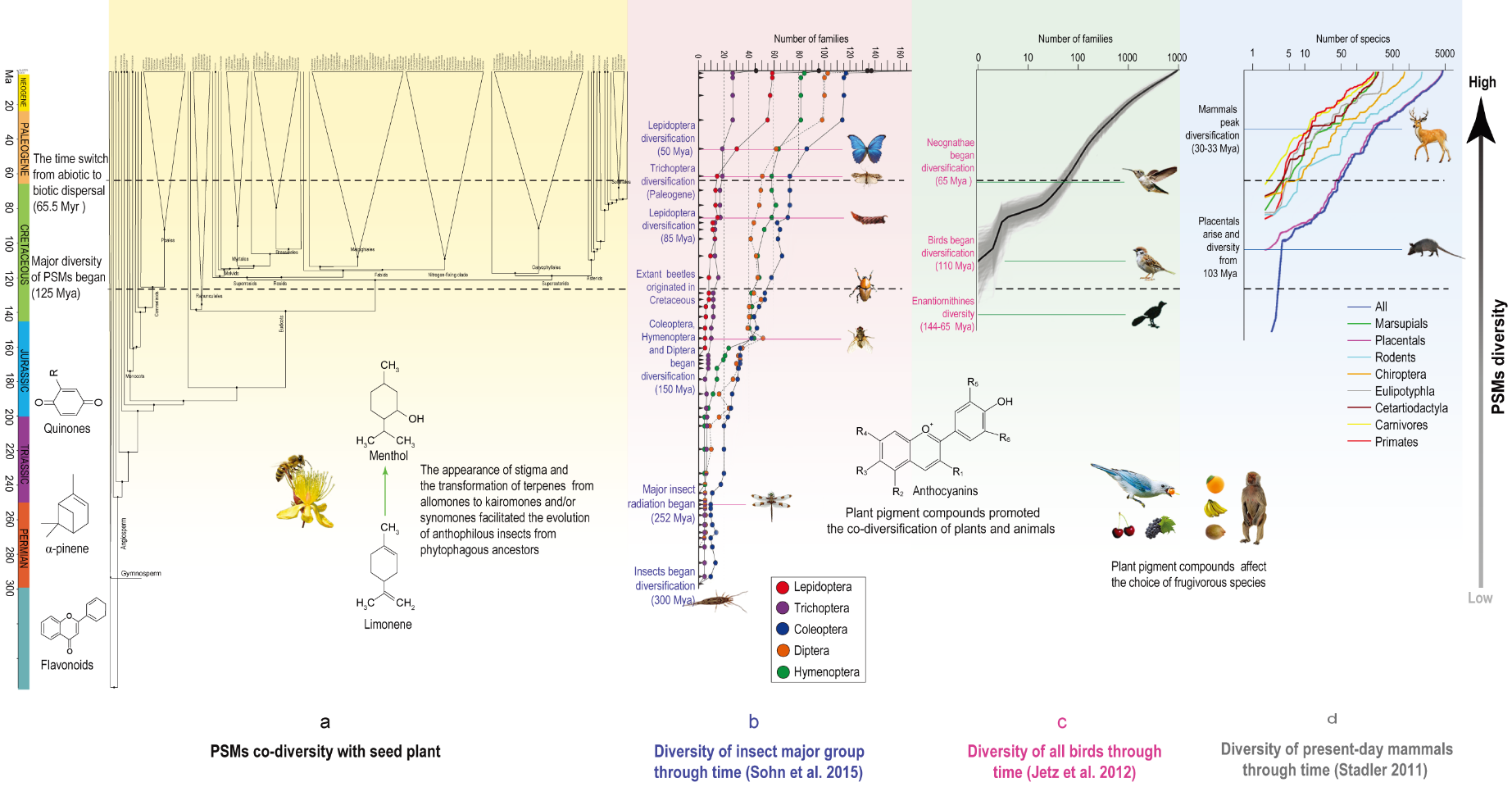
Plant secondary metabolites (PSMs) refer to small molecule compounds that are not essential for biological metabolism but commonly found in plants. They are a key bridge connecting phytochemistry to other subjects of plant science, and also the important chemical trait for in-depth study of plant phylogeny.
Using phylogenetic method, researchers from the Kunming Institute of Botany (KIB) of the Chinese Academy of Sciences and their collaborators investigated the distribution and evolution pattern of eight classes of PSMs in "tree of life" of seed plant.
The eight classes of PSMs include tannins, quinones, phenylpropanoids, flavonoids, phenolic acids, steroids, terpenoids and alkaloids.
This study found that among 437 families of seed plant, the chemical constituents of 309 families have been reported. Flavonoids and alkaloids were the most widely distributed and dominant components in seed plants. Other PSMs showed no significant distribution pattern in major clades of seed plant.
The phylogenetic signals of PSMs in the "tree of life" were generally low and tended to be randomly distributed. The results indicated that in addition to inherent genetic factors, multiple origins, interactions between organisms, and the environment played important roles in structuring the complexness, diversity, and near-random distribution of PSMs.
Seven of the eight PSM classes (except for steroids) showed certain phylogenetic signals and distribution regulation in the clades of seed plants, which could provide chemical evidences to phylogeny study, and showed potential in bioprospecting.
In addition, most of the eight PSM classes evaluated in this study were present in the ancestors of seed plants, and diversified tremendously due to the explosion of angiosperm diversity.
During and after the Cretaceous, PSM diversification may have been an important factor in promoting the diversification of insects, mammals and birds.
This study was supported by the Major Program of the National Natural Science Foundation of China, the National Key R&D Program of China, and the Strategic Priority Research Program of Chinese Academy of Sciences.

Fig. 1 Distribution of major classes of PSMs across seed plant phylogeny (Image by KIB)

Fig. 2 Diversification of PSMs compared to the diversification of seed plants, herbivorous and pollinating animals (Image by KIB)

86-10-68597521 (day)
86-10-68597289 (night)

86-10-68511095 (day)
86-10-68512458 (night)

cas_en@cas.cn

52 Sanlihe Rd., Xicheng District,
Beijing, China (100864)

